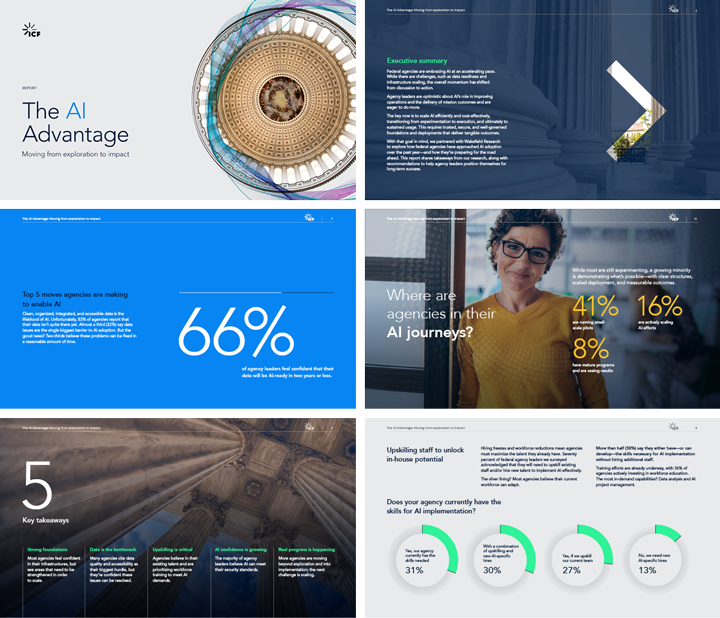
When it comes to digital transformation in government, great moments can make all the difference
Never before have government agencies had so much opportunity to shape citizen experience.
What does it take for government agencies to go digital? And how can they do it in a manageable way? Leaders and decision-makers in the U.S. federal government grapple with this big question every day as they strive to better understand the needs of citizens and achieve mission outcomes.
According to ICF Senior Vice Presidents Kris Tremaine and Andrew LaVanway, the road to large-scale transformation starts with small changes. The two recently sat down with the NIH Information Technology Acquisition and Assessment Center (NITAAC) to talk about ICF’s 360-degree approach to transformation, emerging opportunities to shape citizen experiences, and the true meaning of great moments in government.
“When we think of great moments in government, we think of landing on the moon or mapping the human genome,” says Tremaine. “But a really great moment in government to you and me, the average citizen, is actually having a transaction that doesn’t take all day to happen. Or finding information in fewer than twenty clicks. That’s what we’re all seeking to do… and that’s really what digital transformation is all about.”
The task can feel like a moving target as tech empires like Amazon and Google continue to raise the bar for customer experience, often at breakneck speed. How can bureaucratic, multifaceted government agencies possibly keep pace as the environment for communication, outreach, and engagement continues to evolve?
LaVanway says that this narrative—which suggests that government is falling behind—isn’t totally accurate. More than anything, the new digital landscape allows for an unprecedented level of engagement between government and citizens.
“Everyone talks about how the government’s citizen experience is somehow lagging behind Amazon’s customer experience. And really, never before in the history of the nation have government agencies had the power to shape the citizen experience,” he says. “It’s not that government is behind, it’s that there’s this tremendous opportunity we can seize, because as soon as you provide something a little better to the customer, the customer will be willing and, in fact, excited to come back to you.”
Realizing that opportunity, however, requires a 360-degree approach that accounts for the convergence of marketing, technology, and research and that helps stakeholders understand the impact of digital transformation efforts. According to Tremaine, measuring progress via built-in evaluations enables stakeholders to see what’s working in real time and, if necessary, course-correct along the way. “More than ever,” she says, “we have to show progress.”
With the right ingredients in place, government stakeholders can influence the experiences that actually make a big difference in individuals’ lives. For some, that might mean finding information about a public health issue or a natural disaster without scouring dozens of pages. For others, it might mean spending a few minutes e-filing their taxes rather than the better part of a day. As these positive experiences accumulate over time, they have the power to shift public opinion about federal resources in a big way.
“I believe it’s these small moments,” says LaVanway, “that will renew our faith in government.”
